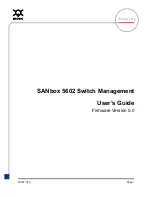
531
8
.
Configure BGP session identifier
Command Explanation
BGP configuration mode
bgp router-id <ip-address>
no bgp router-id
Configure the router-id value; the
no bgp
router-id
command recovers the default
value.
9
.
Configure the BGP Version
Command Explanation
BGP configuration mode
neighbor {<ip-address> | <TAG>} version
<value>
no neighbor {<ip-address> | <TAG>} version
Set the version used by BGP
neighbors; the
no neighbor
{<ip-address> | <TAG>}
version
command recovers
default setting. Presently only
supporting version 4th .
Ⅱ
.
Advanced BGP configuration tasks
1
.
Use Route Maps to Modify Route
Command Explanation
BGP configuration mode
neighbor { <ip-address> | <TAG> }
route-map <map-name > {in | out}
no neighbor { <ip-address> | <TAG> }
route-map <map-name > {in | out}
Apply a route map to incoming
or outgoing routes; the
no
neighbor { <ip-address> |
<TAG> } route-map
<map-name > {in | out}
command cancels the settings
of routing maps.
2
.
Configure Route Aggregation
Command Explanation
BGP configuration mode
aggregate-address
<ip-address/M>
[summary-only] [as-set]
no aggregate-address <ip-address/M>
[summary-only] [as-set]
Create an aggregate entry in the
BGP routing table; the
no
aggregate-address
<ip-address/M> [summary-only]
[as-set]
command cancels the
aggregate entry.
















































